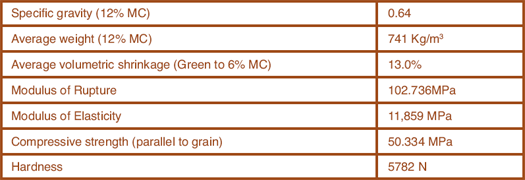Beech


Botanical name: Fagus grandifolia
Common/commercial names: None
Distribution & Availability
Grows throughout Eastern USA, although commercial concentration is in the Central and Middle Atlantic States. Production volumes of higher lumber grades and thicker stock may be limited.
General Description
The sapwood of American beech is white with a red tinge, while the heartwood is light to dark reddish brown. American beech tends to be slightly darker and less consistent than European beech. The wood is generally straight grained with a close uniform texture.
Physical & Mechanical Properties

American beech wood is classed as heavy, hard, and reasonably strong, high in resistance to shock and very suitable for steam bending.
Working Properties
American beech works readily with most hand and machine tools. It has good nailing and gluing properties and can be stained and polished to a good finish. The wood dries fairly rapidly but with a strong tendency to warp, split and surface check. It is subject to a large shrinkage and moderate movement in performance.
Durability
Rated as non-resistant to heartwood decay, but permeable for preservative treatment.
Main Uses
Furniture, doors, flooring, internal joinery, panelling, brush handles and turning. It is particularly suitable for food containers as there is no odour or taste.
Other Information
Occasional brown streaks of mineral can be found in the heartwood and are not considered a defect. Commercially, production of beech is not on the scale of European production but there are U.S. companies specialising in steaming and export
